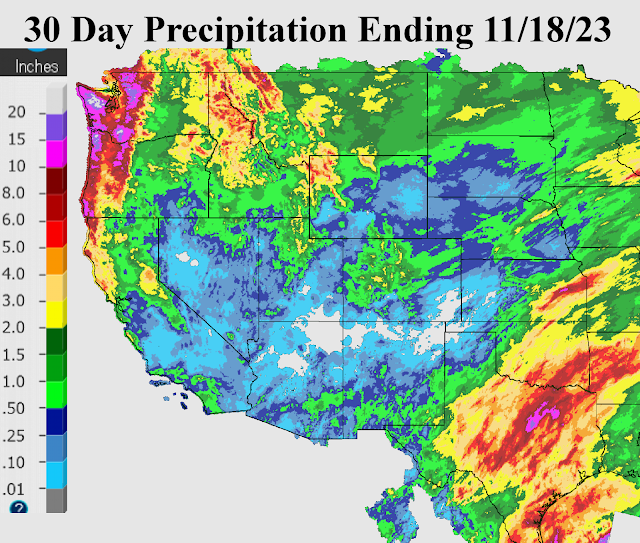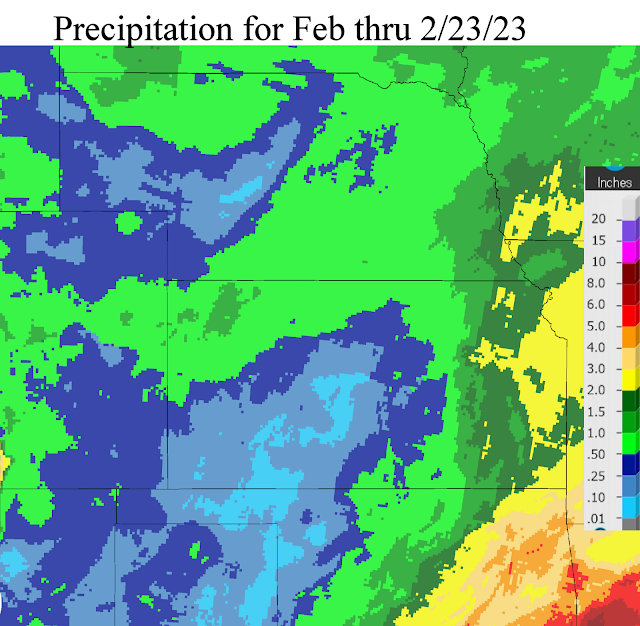As many of you are aware, I retired from my position with the National Weather Service at the end of 2022. However, I'm not leaving weather as a profession. I have since formed my consulting company - Hutton Weather Futures, LLC. I will be providing a more specific form of weather outlooks that are similar to what you may have read in this blog. It's in the formative stages at this point but will be gaining ground quickly. It will be a subscription based opportunity for you to receive valuable insight into what can be expected weather-wise far into extended periods to help in your business needs. At this point, access to the data will likely be a through a weekly or sub-weekly report (or as needed in between a weekly report). The pricing structure is still be worked on. I hope to have everything ironed out by the end of this week (20th) and details will be shared in this blog. Stay tuned by checking back.
In the past week I've spoken at several meetings discussing this awful weather situation that much of the high plains has been in. The one silver lining is that there have been weather systems, but unfortunately they have not benefited much of the high plains. Starting tonight and through middle part of next week, there will likely be 3 more opportunities. Looking at the upper air map from this morning...

A very strong upper level storm was moving towards the Four Corners region. It has been strong enough to dump copious amounts of snow even as far south as Flagstaff Arizona. The issue (as is typical) will be the eventual track of the storm as it moves out into the plains. Unfortunately for much of the high plains of Kansas down into west Texas, the system will track too far north to bring significant moisture. Northeast Colorado, Northwest Kansas across much of Nebraska there will be a large area of heavy snow. Across the eastern half of Kansas there will be pretty fair amount of rain and even freezing rain closer to the Nebraska/Kansas border.
A second potential storm, that as of this morning was across the Gulf of Alaska, could impact the plains. It was set to amplify into the high plains over the coming weekend. Initial thoughts would have it tracking a farther south so that areas that miss out tonight/Wednesday should get at least some precipitation (likely in the form of snow). Details are not possible at this point as the system will have to undergo strengthening and amplifying before any idea will come into light. But, fingers crossed!
A third system is simply a small disturbance aloft that was currently way out in the Pacific. It is denoted by the red X on the top left corner of the map above. There is some possibility that it could be a system to watch by the middle part of next week. There is a tremendous amount of uncertainty.
Here is the early look at what could fall through next Tuesday (image from the Weather Prediction Center)
An important point though is that all three of the systems may miss much of the high plains of Kansas into the southern high plains. As stated above, there have been systems all fall and winter but most have bypassed the hardest hit region of the drought.
Speaking of which, here is the latest drought map.
California has certainly improved in that category! Here is a percent of normal precipitation since the beginning of January.
Some of the snowpack stations are already above the seasonal normal and some are approaching record amounts of moisture in the snow - already! If only we could get just a taste of that.
So to recap...
I've started a company - Hutton Weather Futures, LLC. Frequent (at a minimum weekly, but with updates) reports will be emailed to subscribers. The pricing structure has not been set but hopefully I will be ready to go by the end of the week. Details are forthcoming and will be posted in this blog. BTW, this blog will probably continue but on an in-frequent basis with less detail.


















